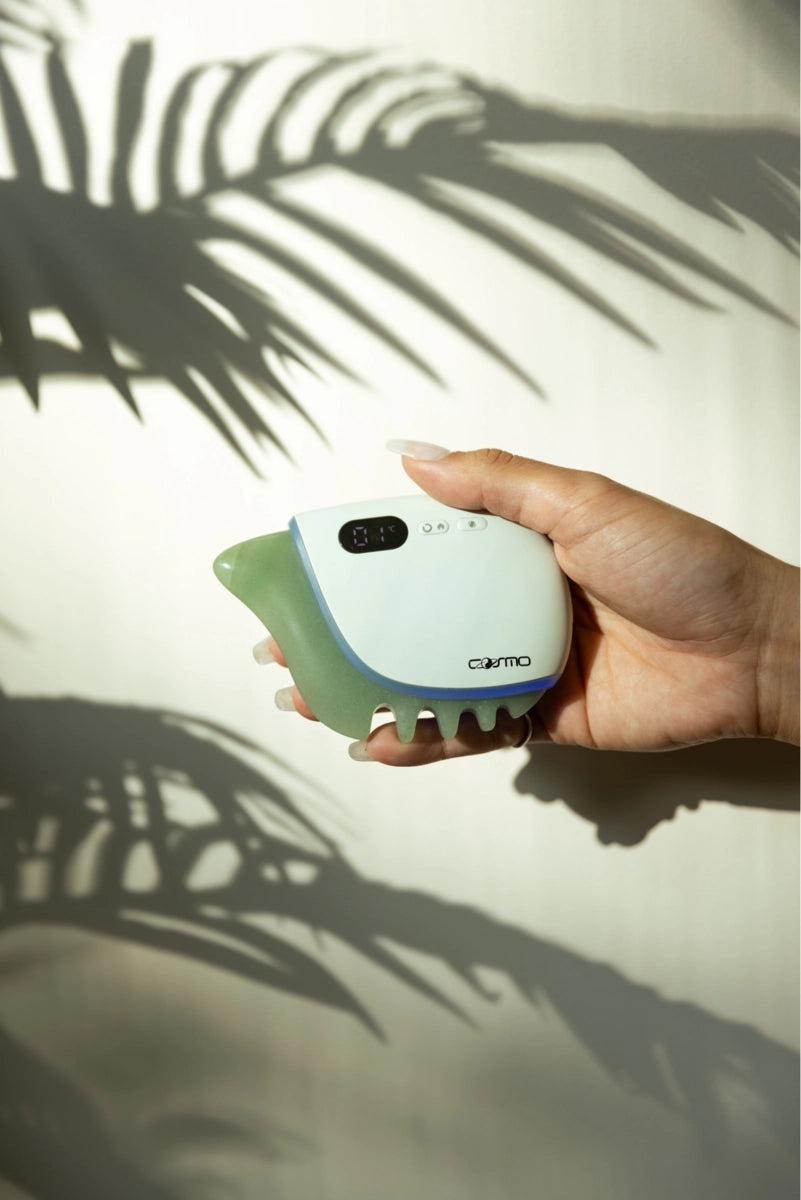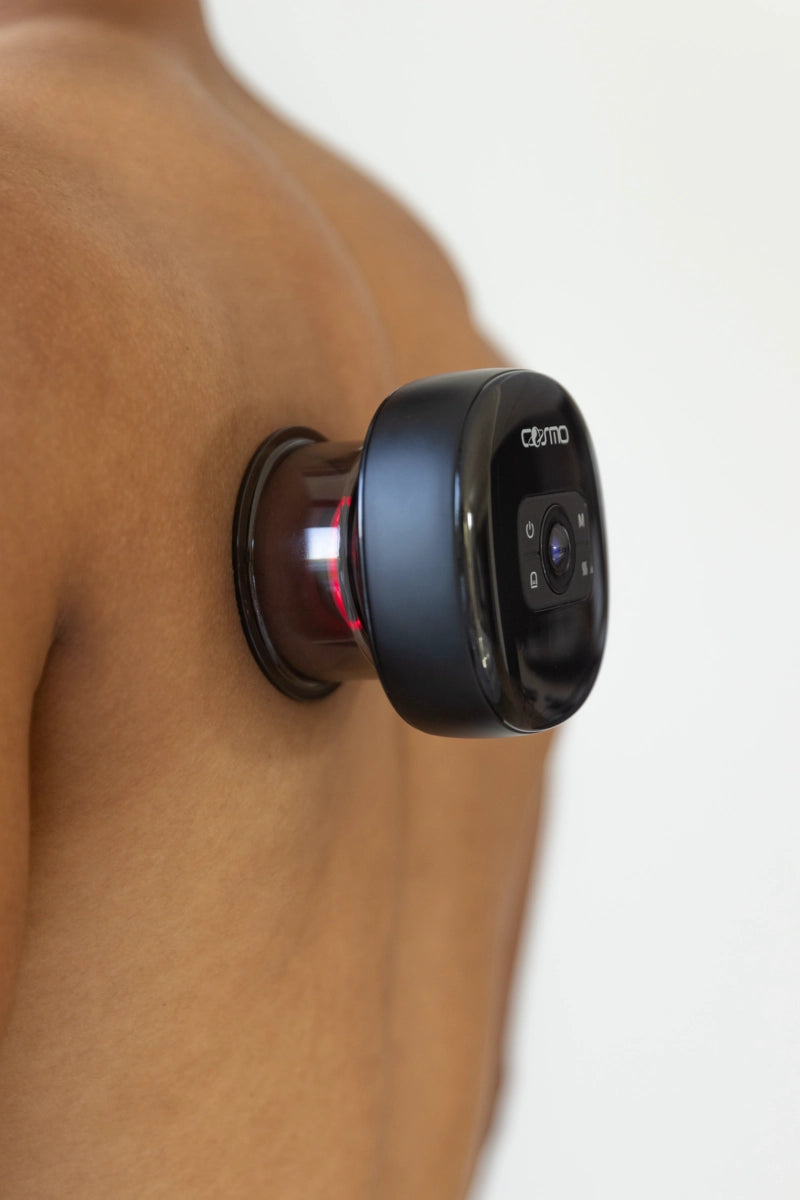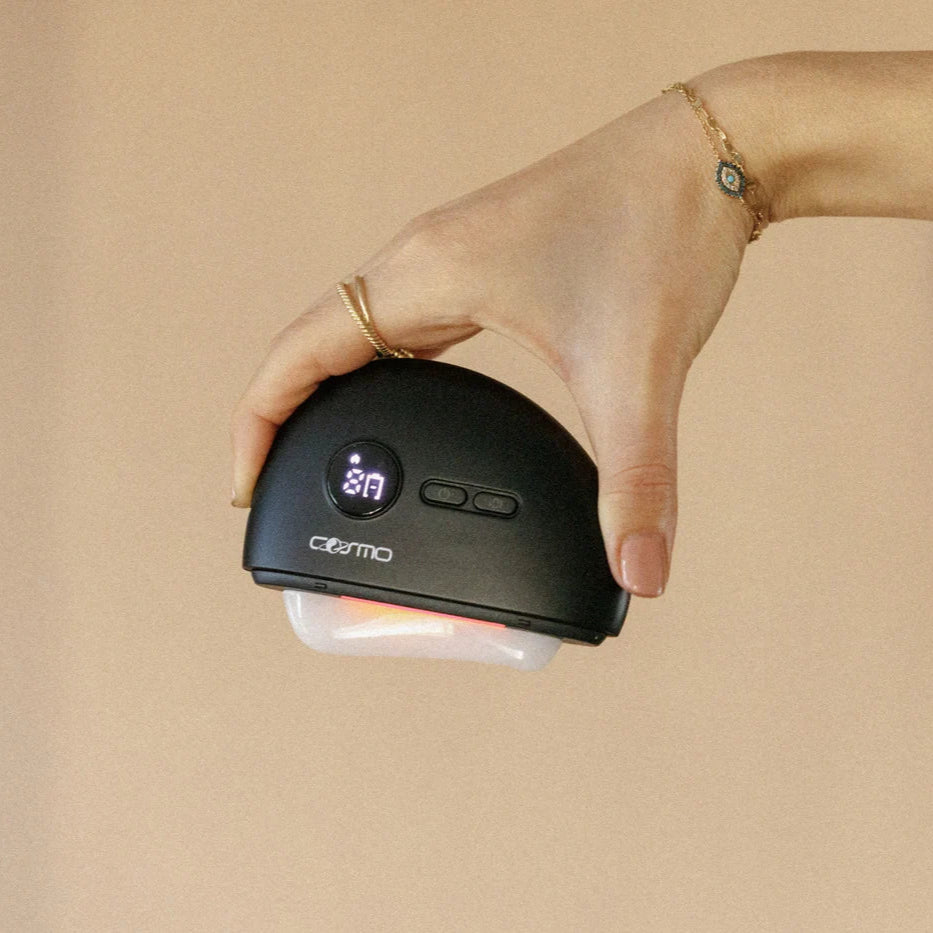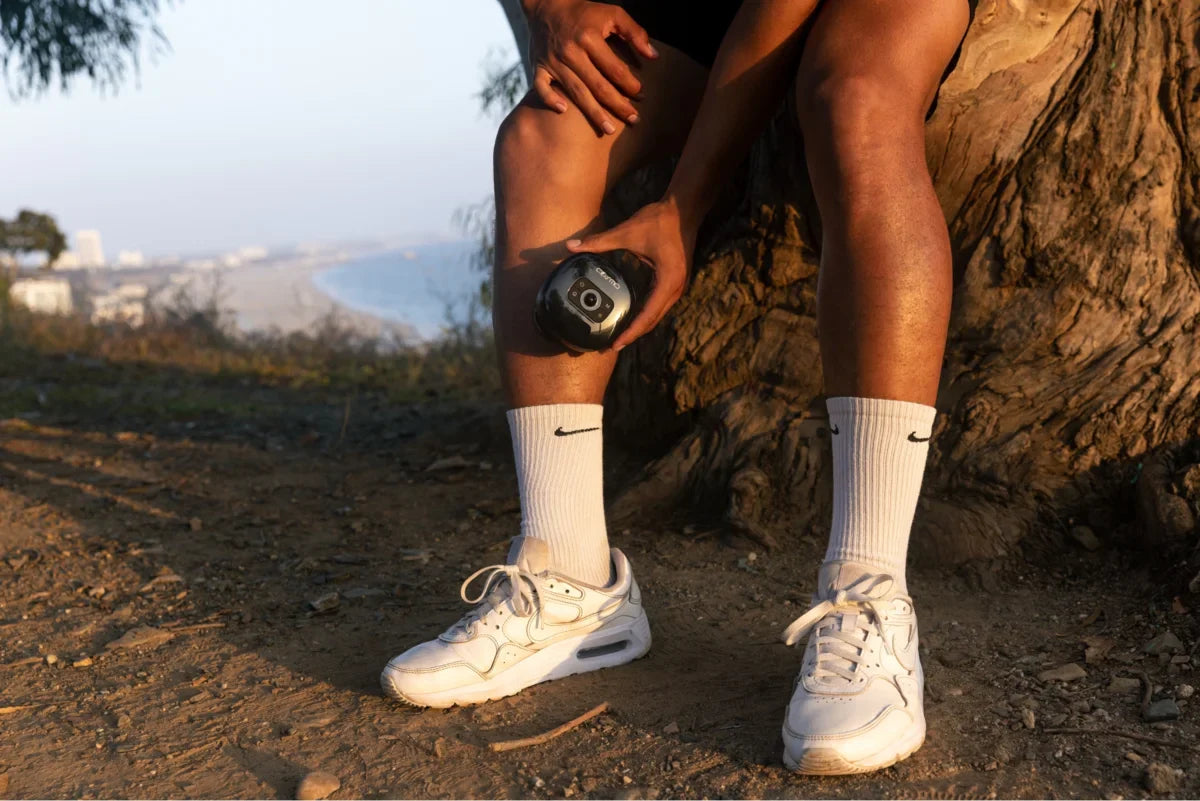The human body is crisscrossed by invisible pathways of energy and physical connective tissues alike. In Traditional Chinese Medicine (TCM), the body's energy meridians are believed to carry life force (Qi) through organs and muscles, influencing health and vitality. Meanwhile, modern anatomy describes a continuous web of fascia enveloping and linking all our muscles and organs. At first glance, these concepts seem unrelated – one rooted in ancient TCM theory, the other in biomedical science. Yet growing evidence suggests they might be two sides of the same coin.
Understanding TCM Meridians and Energy Flow
In Traditional Chinese Medicine, meridian lines are the pathways through which vital energy flows throughout the body. These meridians form an intricate network connecting the internal organs with various tissues and acupoints on the body surface. There are twelve primary TCM meridian lines, each corresponding to an organ system, along with additional extraordinary vessels that help regulate Qi circulation. When Qi flows freely along these channels, it is thought to maintain health and balance; conversely, blockages or imbalances in meridians are believed to lead to illness or pain. For example, a blockage in the Liver meridian might manifest as menstrual or emotional issues, whereas smooth flow would support harmony. TCM practices like acupuncture and acupressure target specific points on these meridians to “unblock” Qi and restore its proper flow. In essence, meridians provide an energy map of the body linking organs and functions via an unseen current of life force.

TCM also emphasizes that the meridian network coordinates with blood flow and other bodily fluids. The meridian fascia connection becomes apparent when considering that many acupuncture points (places where Qi is accessed) lie in depressions or between muscles – areas rich in connective tissue. The traditional view holds that Qi and blood flow together; “where Qi goes, blood flows.” This hints at a possible physical basis for meridians. Indeed, the classic descriptions of meridians often align with nerve pathways or muscle planes. Modern acupuncturists acknowledge that stimulating these points not only influences the body's energy meridians but also triggers physiological changes.
Fascia: The Body’s Connective Tissue Network
Parallel to the meridian system is the fascia – a three-dimensional matrix of connective tissue that runs throughout the body. Fascia is often described as a wrapping or sheath that covers muscles, bones, organs, nerves, and blood vessels. In fact, fascia is one continuous structure throughout your body – like an internal spider web of collagen fibers – encasing and connecting every part from head to toe. When healthy, fascia is flexible and well-aligned, allowing muscles and organs to glide smoothly against each other. If fascia becomes tight, thickened, or stuck, it can restrict movement, pull the body out of alignment, and even cause pain. This holistic quality mirrors the interconnectedness seen in meridian theory. Anatomists have identified specific myofascial lines (also known as myofascial meridians), which are continuous bands of fascia spanning multiple regions of the body. Practitioners who focus on fascia alignment often aim to correct such imbalances, restoring proper glide between layers and reducing unnecessary tension. Maintaining good fascial health – through stretching, hydration, and manual therapy – ensures that our “biological fabric” remains supple and supportive, much like keeping an irrigation system free of obstructions.
Models Mapping Myofascial Meridians and Their Role in Structural Bodywork
Over the past few decades, several models have emerged to map the body’s myofascial meridians—continuous lines of fascia that transmit force and connect distant regions of the body. Among these, the Anatomy Trains model, developed by Tom Myers, is one of the most influential and widely used frameworks in both movement therapy and hands-on bodywork.
Anatomy Trains: Mapping the Body’s Fascial Connections
The Anatomy Trains model organizes the body’s fascia into a series of distinct “trains” or lines, each representing a myofascial pathway that links muscles, tendons, and connective tissue from head to toe. Myers originally identified twelve principal myofascial meridians, such as the Superficial Front Line, Superficial Back Line, Lateral Line, Spiral Line, and Deep Front Line, among others. Each line traces a route through the body, illustrating how tension, strain, or dysfunction in one area can influence distant structures along the same pathway.
This approach moves beyond the traditional view of muscles functioning in isolation, highlighting instead how the body operates as an interconnected network. For example, tension in the plantar fascia of the foot can affect the hamstrings and even the muscles at the base of the skull, all along the Superficial Back Line.
Application in Structural Bodywork and Therapeutic Sessions
Structural bodywork practitioners, such as those trained in Structural Integration or myofascial release, use these mapped meridians to assess and address patterns of imbalance, restriction, and compensation in the body. Instead of focusing only on the site of pain or dysfunction, practitioners consider how issues may originate elsewhere along a myofascial line. In a typical therapeutic session, the practitioner may:
-
Posture Assessment: Begin by thoroughly evaluating the client's posture and movement patterns to identify any imbalances or restrictions along the myofascial meridians. This may involve observing standing and walking positions, as well as specific movements, to pinpoint areas where tension or misalignment is present.
-
Manual Techniques: Apply targeted manual techniques—such as deep tissue massage, myofascial release, or stretching—along specific myofascial lines to release restrictions and restore balanced tension. These techniques are customized to address the unique needs of each client and may include sustained pressure, slow stretching, or gentle manipulation of the connective tissue to improve mobility and function.
-
Integration Exercises: Guide the client through movement or awareness exercises that reinforce new patterns of alignment and integration. These exercises help the client become more aware of their posture and movement habits, supporting long-term improvements by encouraging the body to maintain balanced tension and efficient movement in daily life.
The Anatomy Trains model is often used as a roadmap for a series of progressive sessions, each focusing on different lines or regions. Over time, this approach can help improve posture, reduce chronic pain, and enhance overall movement efficiency by addressing the root causes of imbalance within the fascial network.
Why These Models Matter
By providing a clear map of the body’s fascial connections, models like Anatomy Trains empower both practitioners and clients to understand how seemingly unrelated symptoms may be linked. This holistic perspective supports more effective interventions and lasting results, making these models a cornerstone of contemporary structural bodywork and therapeutic movement practices.
Practical Uses of Meridian-Fascia Alignment
In modern clinical practice, the integration of meridian-fascia alignment has become a valuable approach for both acupuncturists and bodywork professionals seeking more comprehensive and effective patient outcomes. This method recognizes that the body’s energetic and structural systems are deeply interconnected, and that addressing both can yield superior therapeutic results. For acupuncturists, understanding the anatomical pathways of fascia that correspond to traditional meridian lines can refine point selection and enhance treatment precision. For instance, when treating chronic back pain, a practitioner might not only target classical points along the Bladder meridian but also assess fascial tightness along the corresponding myofascial tracks. By palpating for fascial restrictions and integrating needling techniques that follow the fascial planes, the clinician leverages both the energetic and physical aspects of healing—potentially improving pain relief, mobility, and functional recovery.
Bodyworkers like massage therapists and physical therapists are increasingly using meridian concepts in fascial release. They may map symptoms to both myofascial meridians and TCM channels, then use techniques such as myofascial release, cupping, or gua sha along these pathways. For example, to treat shoulder issues, therapists may work along related fascial lines and meridians throughout the arm, neck, and torso, recognizing that tension in one area can affect others. This holistic approach helps reveal and resolve underlying patterns missed by more segmented methods. Meridian-fascia alignment is also used in movement therapies and rehab. Practitioners design exercises and stretches that target both fascial lines and meridian pathways to improve tension, posture, and organ function. Treatment plans may combine acupuncture, fascial work, and movement to address root causes across multiple systems. This integrative approach can be adapted for various issues, including pain, posture problems, stress, and fatigue.
Ongoing education is crucial for practitioners wishing to apply meridian-fascia alignment in clinical settings. Many professional organizations now offer specialized courses, workshops, and continuing education credits focused on this integrative model. These educational resources provide in-depth training on anatomical mapping, assessment skills, hands-on techniques, and case-based clinical reasoning, empowering practitioners to deliver more nuanced and effective care. By embracing meridian-fascia alignment, clinicians can bridge Eastern and Western paradigms, offering patients a truly holistic path to healing and functional wellness.
The Mechanisms and Outcomes of Stretching on Fascia and Meridian Pathways
Stretching benefits both the body’s fascia and meridian pathways, improving more than just flexibility. When you stretch, you lengthen fascia, the tissue connecting muscles, organs, and nerves. This process hydrates fascia, breaks up adhesions, and restores elasticity, helping muscles and organs move freely while reducing pain and increasing mobility. Since many Traditional Chinese Medicine (TCM) meridians run through fascia, stretching may also unblock Qi and blood flow by releasing fascial tension.

Regular, targeted stretching improves posture, reduces pain, and helps prevent injury. Stretching areas linked to specific meridians, like the inner thighs for the Liver meridian, can benefit related organs and emotional states, according to TCM. Many people notice better digestion, circulation, and emotional balance. Thus, stretching connects physical and energetic health, supporting overall well-being.
Connecting Meridians and Fascia
The parallel between TCM meridians and the fascial network has intrigued researchers in recent years. Growing evidence suggests that the ancient description of meridians may correspond to physical structures in the body – notably, the planes of connective tissue. In other words, the meridian pathways might be mapped onto the continuous web of fascia. The human fascia network could be the actual anatomical basis of the meridians described in TCM. By this view, what Chinese medicine terms stagnant Qi in a meridian could correlate to restricted blood flow or tension in a fascial plane. Likewise, stimulating an acupuncture point might work by affecting the local connective tissue and its rich nerve endings, sending signals through the fascial network to distant areas.
Integration of Western Fascia Models and Eastern Meridian Concepts
Recently, researchers and practitioners have worked to combine Western anatomical models, especially fascia and myofascial lines, with Eastern concepts like Traditional Chinese Medicine (TCM) meridians. This integration aims to bridge two different ways of understanding the body for more comprehensive health approaches. Western anatomy traditionally focuses on separate structures, but now recognizes fascia as a dynamic network influencing movement and function. In contrast, TCM describes meridians as channels for vital energy (Qi). Studies show that myofascial lines often align with meridian pathways, and many acupuncture points are found in areas dense with connective tissue, suggesting a physical basis for TCM channels.
This integration involves scientific research and collaboration among anatomists, acupuncturists, and therapists, who compare fascial and meridian maps through imaging and clinical observation. Training now often includes both systems. By combining Western structural knowledge with Eastern energetic perspectives, practitioners can better address physical and energetic aspects of health, leading to more effective treatments and a holistic understanding of the body.
Aligning Energy and Fascia
One traditional technique that vividly demonstrates the interplay of meridians and fascia is gua sha. Gua sha involves using a smooth-edged tool (historically jade or stone) to scrape along the skin, typically following meridian pathways. It has been used for centuries in TCM to improve circulation, release “stagnant” energy, and relieve pain.
In recent years, gua sha has gained popularity in the West, especially for beauty and detox purposes like gua sha facial massage. Practitioners and enthusiasts often use gua sha for lymphatic drainage, gently scraping along the face or body to reduce puffiness and help lymph fluid move. From a modern perspective, gua sha’s effects are twofold: it mechanically loosens tight fascial adhesions under the skin, and it boosts microcirculation in the area. In fact, one review highlighted that gua sha boosts circulation in treated areas – measurably increasing both blood and lymphatic flow. This enhanced fluid movement delivers more oxygen and nutrients to tissues while carrying away waste, aligning with TCM’s idea of “clearing stagnation.”
Traditionally, gua sha was performed vigorously on the body (often causing temporary red petechiae or “sha” bruising as a sign of stagnation release). However, modern cosmetic gua sha therapy devices use a gentler touch – especially on delicate areas like the face – to avoid bruising while still boosting circulation. The gliding motion of gua sha along meridian lines is believed to support lymphatic drainage by manually pushing lymph toward the nodes, so that swelling goes down and the skin takes on a fresh, lifted look. In practice, people often observe that after a proper gua sha session, areas like the face appear more sculpted and less puffy – a direct result of moving excess fluid. Many also report relief of muscle tension and headaches from gua sha, which makes sense considering this technique likely engages myofascial trigger points along with acupoints.
Cupping Therapy and Fascial Release
Another TCM modality that bridges energetic theory and connective tissue is cupping therapy. In cupping, special cups are placed on the skin to create suction. The vacuum effect gently pulls the skin and underlying tissue upward into the cup. This creates a tensile force that can literally lift and separate fascial layers. In Western terms, cupping is a form of myofascial decompression. It helps loosen tight fascia, increase blood flow to stagnant areas, and stimulate the lymphatic system. From the TCM viewpoint, cupping on specific meridian points dispels stagnation and allows Qi to flow more freely. Many who receive cupping notice their muscle knots soften and areas of chronic pain ease up afterward – likely due to the relief of fascial adhesions and improved circulation.
Cupping’s suction has the ability to grab and lift the fascia, which facilitates lymphatic drainage and allows more efficient exchange of nutrient-rich blood in the local tissues. Essentially, it stretches the fascia and creates space for fluids to move, reducing inflammation and muscle tension. The circular marks left by cupping are actually a byproduct of drawing blood to the surface and breaking tiny capillaries – seen in TCM as removing stagnation. These marks fade over a few days as the lymphatic system clears the debris, a sign that the body is processing the treatment. In terms of fascia release, cupping can reach into deeper layers that hands might struggle to affect via conventional massage. By moving cups methodically along muscle groups, a therapist can both stretch the fascia and stimulate Qi along those channels.
Acupuncture for Energy and Structural Alignment
With acupuncture, very fine needles are inserted into specific points along the meridians to influence the flow of Qi. Traditionally, this is seen as adjusting the body’s energetic balance – clearing blockages, tonifying deficiencies, and harmonizing organ systems. However, modern insights reveal that acupuncture also interacts with the nervous system and connective tissue in complex ways. Each needle insertion creates a tiny controlled injury that triggers local and systemic healing responses. From a structural standpoint, acupuncture needling often coincides with myofascial trigger points. Many acupuncture points lie in locations of high connective tissue density. When a needle is inserted and gently rotated, nearby collagen and fascia can wrap around the needle, tugging on cells called fibroblasts and causing them to secrete beneficial cytokines. Thus, one could view acupuncture as a unique form of meridian alignment therapy that leverages the body’s own repair mechanisms. It aligns the subtle energy by also aligning physical tissue responses. Practitioners sometimes say acupuncture helps “reset” muscle resting length or relieve pressure on nerves – outcomes very much about fascia and musculature, not just mysterious energy. This is one reason a patient may experience not only pain relief but also improved range of motion after acupuncture.

People commonly use acupuncture for alignment issues that have both physical and energetic components. For example, consider someone with poor posture and stress. An acupuncturist might insert needles along the Bladder meridian of the back and the Lung meridian of the chest. This could release tight fascia in the chest and upper back (improving posture and breath) while also, according to TCM, strengthening Lung Qi to ease emotional tension. In effect, the needles serve as a bridge: they send signals through connective tissue and nerves that prompt muscles to relax and blood to flow – the physiological counterpart of unblocking Qi stagnation. By combining acupuncture with movement or postural exercises, some practitioners specifically aim to realign structural imbalances over time, illustrating how closely intertwined the energetic and anatomical aspects can be.
Myofascial Release and Holistic Alignment
While TCM developed acupuncture and similar therapies, Western medicine has its own approaches to treating fascia and achieving alignment. For example, myofascial release therapy is a hands-on technique used by physical therapists and massage therapists to stretch and soften restricted fascia manually. In a typical myofascial release session, the therapist palpates the body for areas of fascial tightness or “knots”. By applying sustained, gentle pressure and stretch, the therapist encourages the bound tissue to “let go,” thereby easing tension and pain. Myofascial release doesn’t explicitly talk about energy, but its goals are analogous to meridian fascia alignment: restore the free flow of the body’s circulatory and neuromuscular functions by releasing blockages. Many chronic pain conditions – from lower back pain to migraines – have a myofascial component where tight bands of fascia refer pain elsewhere. Releasing these can produce widespread relief.
An interesting convergence appears when comparing maps of myofascial trigger points to acupuncture points: there is significant overlap. For instance, a trigger point in the upper trapezius lies almost exactly at the acupuncture point Gallbladder 21, known in TCM for relieving neck/shoulder tension. Through different languages, myofascial therapists and acupuncturists are often addressing the same phenomena.
Aligning fascia and meridians is about restoring the free circulation of the body’s vital forces, whether we label them oxygen and nerve impulses or Qi and blood. By keeping the connective tissue network healthy and the energy pathways clear, we support the body’s natural ability to heal and maintain balance. This integrated perspective explains why traditional techniques such as gua sha facial massage or acupuncture often have broad benefits: they are working on a whole-body network. As research continues to illuminate fascia’s role in health, we are likely to see even more convergence between biomedicine and TCM. Not only does this integrated view validate age-old healing practices, it also opens the door to new innovations in holistic health for years to come. This merging of Eastern and Western perspectives represents a promising path for future healthcare.
Sources
-
Sydney Institute of Traditional Chinese Medicine – Understanding Meridians and How They’re Used in Traditional Chinese Medicine.
-
Cleveland Clinic – Fascia Tissue Function (Health Library).
-
Dogwood Studio Yoga (quoting NIH) – Blog post “Fascia and Energy Meridians” (2019).
Hamp et al., Journal of Cosmetic Dermatology (2022) – Gua Sha, Jade Roller, and Facial Massage study findings. -
Porcari et al., J. Sports Rehab (2020) – Study on myofascial decompression (cupping) vs. self-myofascial release.
-
Danny Foley – Myofascial Meridians and Their Significance, SimpliFaster (2021).












